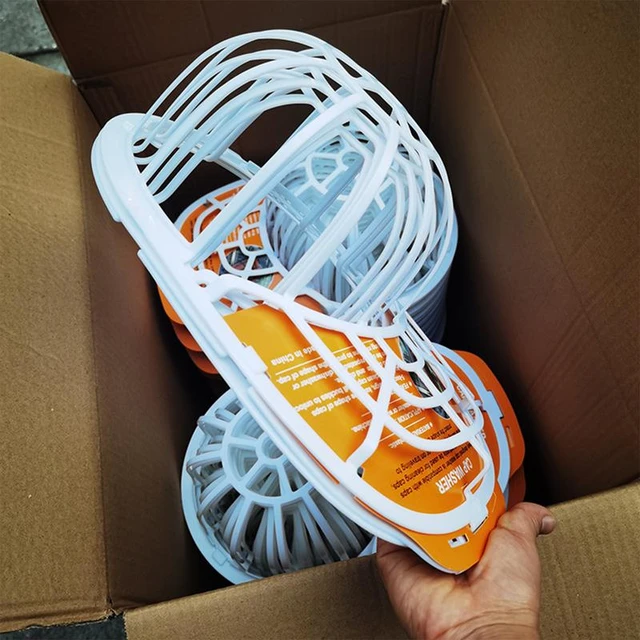Introduction:
Hats, whether they are baseball caps, beanies, or other types of headwear, often require proper cleaning to maintain their shape and appearance. Using a washing machine can be a convenient and effective way to clean hats, but it must be done carefully to avoid damage. This guide provides detailed steps and tips on how to wash different types of hats using a washing machine, ensuring they come out looking like new.
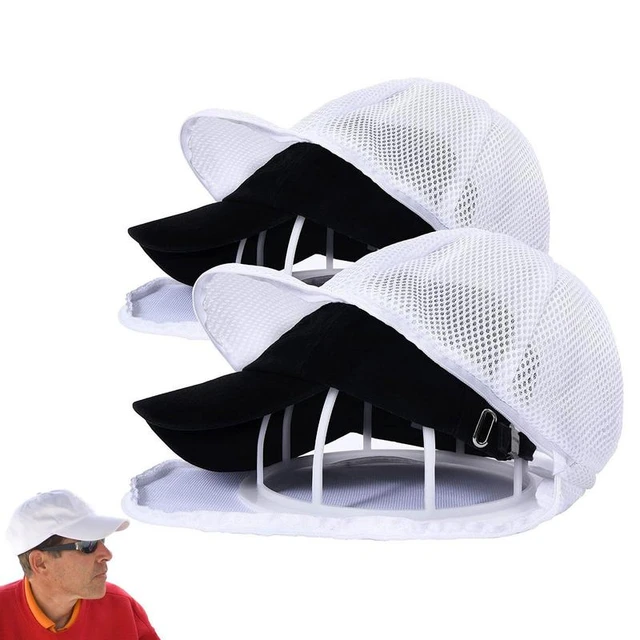
Hat Washing Machine:
How Can You Properly Wash Caps and Hats Without Damaging Them?
Initial Considerations:
What Should You Know Before Washing Hats in a Machine?
Before placing your hat in the washing machine, there are several important factors and initial checks to consider.
Material and Construction:
Fabric Check:
Material Sensitivity: Different hats are made from various materials such as cotton, wool, polyester, and others. Each material reacts differently to washing, so it’s crucial to know what your hat is made of before washing.
Structured vs. Unstructured: Structured hats have a firm shape, often with a cardboard or plastic insert in the bill, while unstructured hats are more flexible. Structured hats require extra care to maintain their shape during washing.
Care Labels:
Manufacturer’s Instructions:
Read Labels: Check the care labels on the inside of your hat. Manufacturers often provide specific cleaning instructions that can guide you on whether the hat is machine-washable.
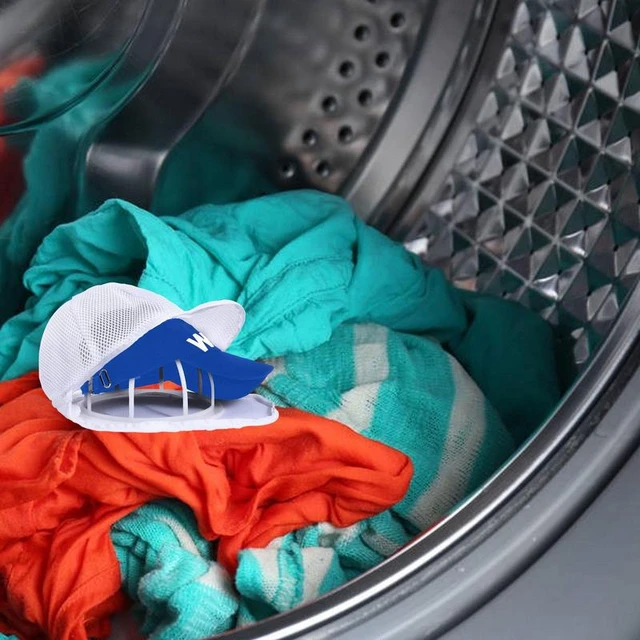
Colorfastness Test:
Color Bleeding:
Color Test: Perform a colorfastness test by dabbing a small amount of water on an inconspicuous area of the hat with a white cloth. If color transfers to the cloth, the hat may bleed color during washing, and you should avoid machine washing it.
Preparation Steps:
How Should You Prepare a Hat for Washing?
Proper preparation can help ensure your hat is washed effectively without being damaged.
Pre-Treatment:
Stain Removal:
Spot Clean: Use a mild detergent or a fabric stain remover to spot clean any visible stains. Apply the cleaner with a soft brush or cloth and gently work it into the fabric.
Sweat Stains: For tough sweat stains, use a mixture of water and baking soda or a specialized hat-cleaning solution. Apply it to the stains, let it sit for a few minutes, and then gently scrub.
Shape Preservation:
Hat Form:
Shape Maintainers: Place your hat on a hat form or inside a structured hat washing cage. These tools help maintain the hat’s shape during the washing process.
Alternative Method: If you don’t have a hat form or cage, you can stuff the hat with a towel to help it hold its shape.
Washing Cycle:
What Settings Should You Use on the Washing Machine?
Selecting the correct washing machine settings is crucial to prevent damage to your hat.
Washing Machine:
Machine Type:
Front-Load vs. Top-Load: Front-load washing machines generally provide a gentler wash due to the absence of an agitator. If you have a top-load machine with an agitator, place the hat in a laundry bag to protect it.
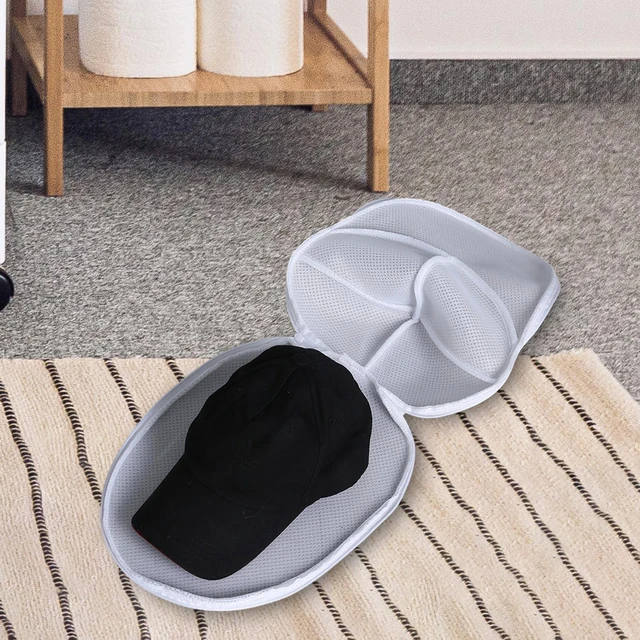
Gentle Cycle:
Cycle Selection:
Delicate or Gentle Cycle: Set the washing machine to a delicate or gentle cycle. These cycles use slower spin speeds and shorter agitation times, reducing the risk of damaging your hat.
Water Temperature:
Cold Water Wash:
Temperature Settings: Use cold water to wash your hat. Hot water can cause shrinkage and color fading, especially in caps made from sensitive materials.
Detergent:
Mild Detergent:
Detergent Type: Choose a mild detergent that is free from bleach and harsh chemicals. Liquid detergents are usually preferred as they dissolve more easily and rinse out better than powders.
Separate Laundry:
Load Distribution:
Single Item Wash: If possible, wash the hat alone or with a few other delicate items. Overloading the washing machine can increase friction on the hat, potentially causing damage.
Rinse and Spin:
What Additional Steps Ensure Thorough Cleaning?
Ensuring thorough rinsing and gentle spinning are critical for properly washing your hat without damage.
Rinse Cycle:
Extra Rinse:
Thorough Rinse: If your washing machine has an extra rinse option, use it to ensure all detergent residues are removed from the hat. Residual detergent can cause irritation and damage the fabric over time.
Spin Cycle:
Low Speed Spin:
Spin Settings: Set the spin cycle to a low speed to minimize stress on the hat. High-speed spins can deform the shape of the hat, especially structured caps.

Drying Process:
How Should You Dry a Hat to Maintain Its Shape and Quality?
Proper drying techniques are essential to ensure your hat maintains its shape and quality.
Air Drying:
Avoid Heat:
Natural Drying: Never use a tumble dryer to dry your hat. The high heat can cause shrinkage, warping, and damage to the fabric. Instead, air dry the hat by placing it on a hat form or a clean towel.
Shape Maintenance:
Maintain Integrity:
Reshape While Wet: While the hat is still damp, gently reshape it to its original form. If using a towel, continue to adjust the shape periodically as it dries.
Drying Time:
Patience Required:
Allow Adequate Time: Allow the hat to dry completely before wearing it again. This can take several hours to a full day, depending on the material and environmental conditions.
Special Materials:
How Should Different Hat Materials Be Handled?
Different materials require specific care to ensure they are properly cleaned without damage.
Cotton Hats:
Durable Fabric:
Routine Cleaning: Cotton hats are generally durable and can withstand machine washing. Follow the preparation, washing, and drying steps outlined above.
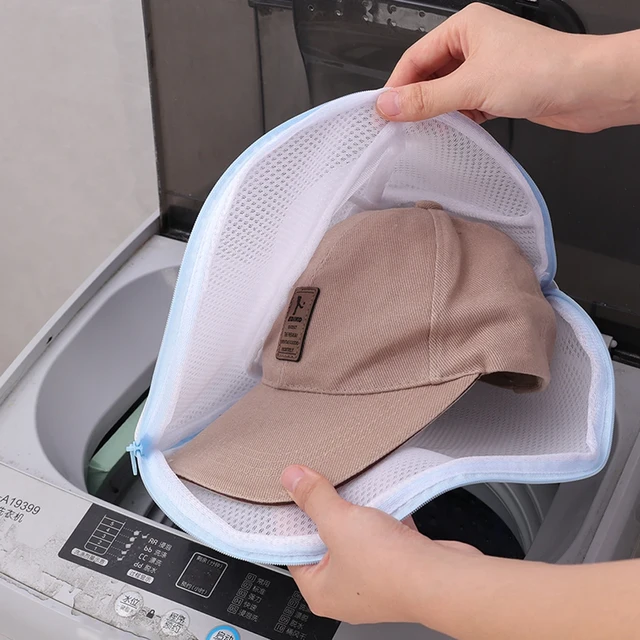
Wool Hats:
Sensitive Material:
Hand Washing Preferred: Wool hats are prone to shrinking in the washing machine. Hand washing is often recommended, but if machine washing is necessary, use cold water and a gentle cycle with a wool-safe detergent.
Polyester and Synthetic Blends:
Common Materials:
Machine Washable: These materials are typically safe for machine washing. Use the delicate cycle and cold water to protect the fabric and colors.
Leather and Suede:
Delicate Fabrics:
Specialized Care: Leather and suede hats should not be washed in a machine. Use specialized leather cleaners and protectants, and follow the manufacturer’s care instructions.
Conclusion
Washing hats in a washing machine requires careful attention to detail, from understanding the material and preparing the hat properly to selecting the right washing settings and drying methods. By following the recommended steps for washing, rinsing, and drying, you can effectively clean your hats without causing damage. Specialized care for different materials and regular maintenance practices further ensure your hats remain in good condition and looking stylish.

